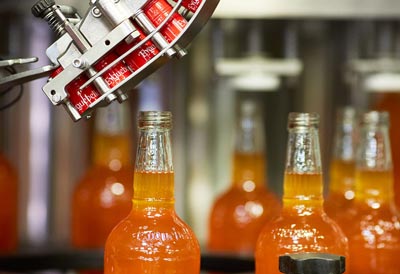
And yes, we're sure you've already asked yourself the question several times: what is eau de vie? This question often comes up during the digestive.
And yes, we're sure you've already asked yourself the question several times: what is eau de vie? It's a question that often comes up during the digestive process.
Discover the secrets behind the origin and production of eau de vie.
Secret No. 1: Whisky is eau de vie

Whisky Eau de vieYou wouldn't expect this one. Whisky is a spirit in the same way as vodka or rum. Strange, isn't it?
So the question is, what characterises these spirits under the name of eau de vie? Eau de vie is quite simply a drink obtained by fermentation or maceration, followed by distillation of fruit, plants, cereals or even wine. Wine and beer, on the other hand, are obtained solely by fermentation.
Whisky, rum and vodka are all eaux de vie. Generally speaking, eau de vie is pure alcohol. The alcoholic strength of an eau de vie varies according to the fruit-alcohol balance, but must be at least 37.5 degrees. At Eyguebelle, our eaux de vie have an alcohol content of between 40 and 45 degrees, as this is the point of balance that we believe to be the most satisfactory (e.g. plum at 40% but mirabelle plum at 45%).
Secret No. 2: Water of life healed
Schnaps in Alsatian, La Gnole or la Goutte for others. In short, eau de vie has many names, but the one we'll remember is originally in Latin: Aqua vitae. Water of life in Latin.
Aqua vitae, the water that restores life. This is what the alchemists of the Middle Ages thought when they developed eau de vie for medicinal purposes, even calling it the elixir of life. Nowadays, people don't believe in 45-degree alcohol as a cure!
But this is what gave the name Eau de vie to this alcoholic beverage. Today, eau de vie is available in a wide range of flavours. However, the first eaux de vie were made from fruit. That's why the most common brandies are plum brandy, pear brandy and cherry brandy.
Secret No. 3: Distil and make your own eau de vie
In France, we mainly make fruit brandies. Let's go back to 4th year chemistry class (yes, the teacher did say some interesting things sometimes!): the process for making eau de vie is distillation.
Eau de vie is made in two main stages: maceration or fermentation and distillation.
Depending on their natural sugar content, the fruit either ferments or is immersed in a neutral eau de vie for several weeks to macerate.
This is followed by the distillation stage. The fermented or macerated fruit preparation is placed in a copper still. By heating the preparation, the aromas and light essential oils are extracted by evaporating the alcohol and then condensing it. Two distillations are necessary to obtain 3 types of product:
- The head of distillation (higher than 90 degrees of alcohol)
- The distillation tail (less than 55 degrees)
- And the heart of distillation (between 90 and 55 degrees).
Only the best quality heart of the distillation is kept and put into vats. The resulting product is perfectly balanced in terms of flavour.
Secret No. 4: An eau de vie ages
After these various stages, the eau de vie is aged in vats. The length of ageing depends on each distillery.
We offer fruit brandies with 40 and 45 degrees of alcohol in 70cl bottles.
How to store eau de vie?
Eau de vie should always be kept dry, even if the bottle has been opened. Under the right conditions, an eau de vie can be kept for several months or years. Store your eau de vie in a dark place to ensure it ages well.
Secret No. 5: Eau de vie is not a liqueur
There is a difference between eau de vie and liqueur. There are liqueurs made from eau de vie, such as cherry liqueur, but the reverse is not true. So why would you tell us that your brandies are listed in the Liqueur category on your menu?
Quite simply because very few people know that a liqueur is an eau de vie and not the other way round. No one could possibly suspect that there are liqueurs in the eau de vie category if we really wanted to respect the classification.
All eaux de vie are obtained by distillation, whereas only plant, seed and bark liqueurs are obtained by distillation.
The degree of alcohol is also different: a minimum of 15 degrees for a liqueur compared with 37.5 degrees for an eau de vie.
Secret n°6: How do you drink eau de vie?

Eau de vie. Although brandies were once drunk as medicine, these days they are no longer drunk for their therapeutic effects but for their taste. Generally, eau de vie is served as a digestive after a meal in a digestive glass. Eau de vie is best enjoyed very cold (taken out of the freezer a few moments beforehand) in a digestif glass.
Eau de vie is also used to make cocktails and certain aperitifs. It is also used to make desserts. Some brandies can be used to make meat sauces. Drink in moderation, of course.
Secret No. 7: Trou Normand with Mirabelle plum brandy
Here's a great classic among Trou Normand recipes: Mirabelle brandy sorbet. Also known as Trou Lorrain, it's made with a scoop of Mirabelle sorbet and a little Mirabelle brandy.
Variation: you can replace the traditional scoop of Mirabelle plum ice cream with a lemon scoop, or why not try something more original with Spéculos or Calisson ice cream. It's up to you to try.














